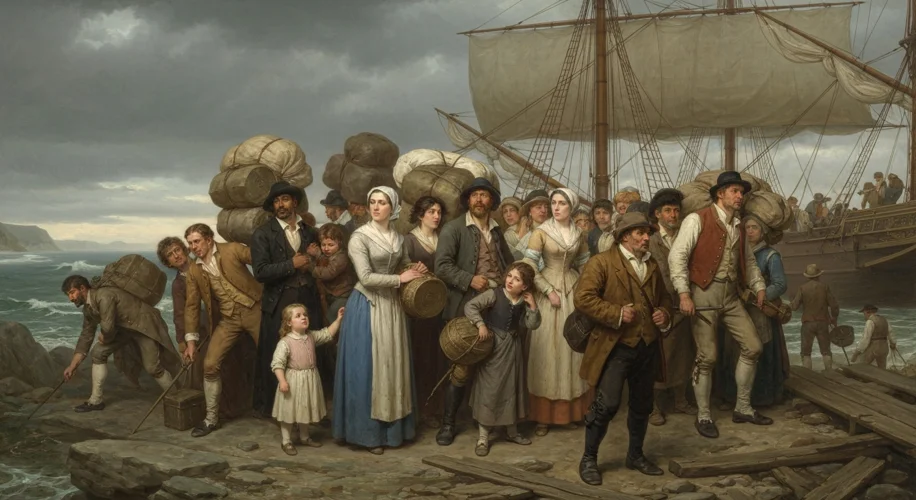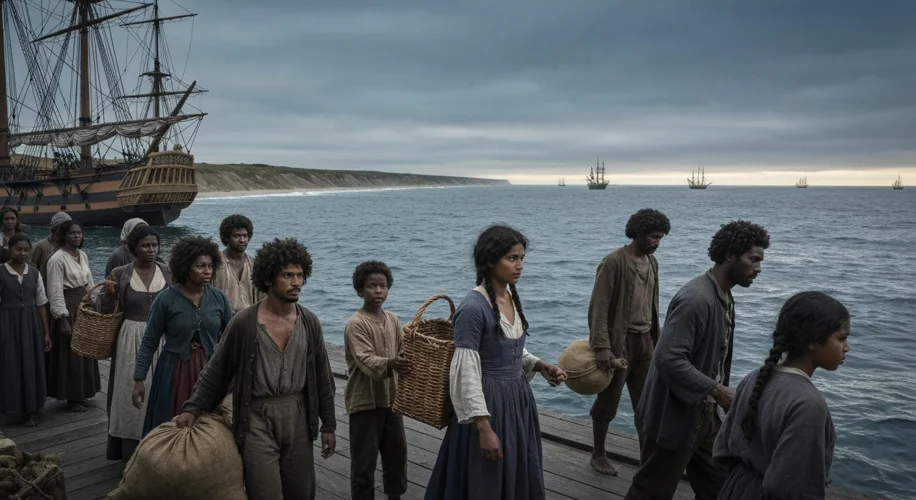The year is 1783. The ink on the Treaty of Paris has barely dried, yet for thousands, the future is a landscape of uncertainty and profound loss. These are the Loyalists – colonists who, through conviction and courage, chose not to sever ties with the British Crown during the American Revolution.
Imagine the scene: ships heavy with families, their possessions, and their unwavering allegiance to King George III, departing from a newly formed United States. Their crime? A refusal to embrace the radical idea of a republic, a government built on the ideals of revolution, rebellion, and, to their minds, chaos. They sought not a land of liberty as defined by their former compatriots, but a haven where order, tradition, and the familiar embrace of monarchy would prevail.

These Loyalists, a diverse tapestry of ethnicities and backgrounds – English, Scottish, Irish, German, and even some African Americans promised freedom by the Crown – were not merely seeking refuge; they were carrying with them the very foundations of a future nation. Their migration, often termed the ‘Great Loyalist Exodus,’ was not a retreat but a redirection. Their destination: the sparsely populated British colonies to the north, what would eventually become Canada.
Their influence on Canada’s nascent identity cannot be overstated. Unlike the burgeoning United States, which was actively shedding its colonial past, Canada inherited a significant population that actively cherished its British heritage. This created an immediate cultural and political divergence. While American revolutionaries championed republicanism, the Loyalists brought with them a deep-seated respect for British institutions, law, and order. They envisioned a land that mirrored the stability and established order of Great Britain, a stark contrast to the perceived upheaval of the new American republic.
This wasn’t simply about avoiding a republican government; it was about a fundamental difference in political philosophy. The Loyalists, by and large, believed in a hierarchical society, a strong executive, and the importance of tradition. This belief system became a bedrock upon which Canadian governance would be built. The resulting political structure in Canada, while evolving, retained a parliamentary system and a constitutional monarchy, diverging significantly from the presidential, republican model adopted by its southern neighbor.
Consider the establishment of Upper Canada (modern-day Ontario). Many of the early settlements were populated by United Empire Loyalists who, upon arrival, were granted land and significant political influence. They brought with them not just their families and their loyalty, but their legal knowledge, their business acumen, and their commitment to the British system of governance. This influx of population and ideology was instrumental in solidifying British control over the region and laying the groundwork for a distinct Canadian identity.
The impact of this migration was profound and multifaceted:
- Political Structure: The Loyalists’ preference for British institutions directly contributed to Canada’s adoption of a parliamentary democracy and a constitutional monarchy, a system that continues to define the nation.
- Legal System: They reinforced the dominance of English common law in much of Canada, establishing a legal framework distinct from the civil law traditions found elsewhere.
- Cultural Identity: Their presence fostered a lasting connection to Britain, creating a dual identity – North American in geography, but distinctly British in its foundational values and institutions.
- Westward Expansion: While the American frontier was characterized by aggressive expansion and the displacement of indigenous populations, the Loyalist migration to Canada, while not without its own injustices, established a different pattern of settlement, often more gradual and under direct Crown influence.
Was their desire to avoid living under a republican government the primary factor? It was undoubtedly a crucial one. The American Revolution was a radical experiment, and for those who valued stability and tradition above all else, the new republic represented a dangerous path. The Loyalists, by choosing to resettle in British North America, were not simply running from something; they were running to something – a vision of a society that honored its past while building a future under the Crown.
Their story is a powerful reminder that nations are not solely forged in grand battles or legislative acts, but also in the quiet, resolute choices of individuals. The Loyalists, often overlooked in broader North American historical narratives, were the unseen architects who laid down critical blueprints for Canada’s unique and enduring identity, ensuring it would carve its own path, distinct from the revolutionary fervor to its south.

Their legacy is woven into the fabric of Canada, a testament to the idea that the absence of revolution can be as defining as the revolution itself. They chose not to break from the past, but to rebuild it on new soil, forever shaping the distinct character of the Great White North.

